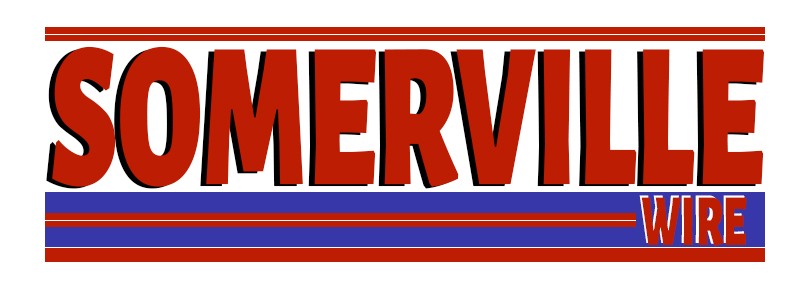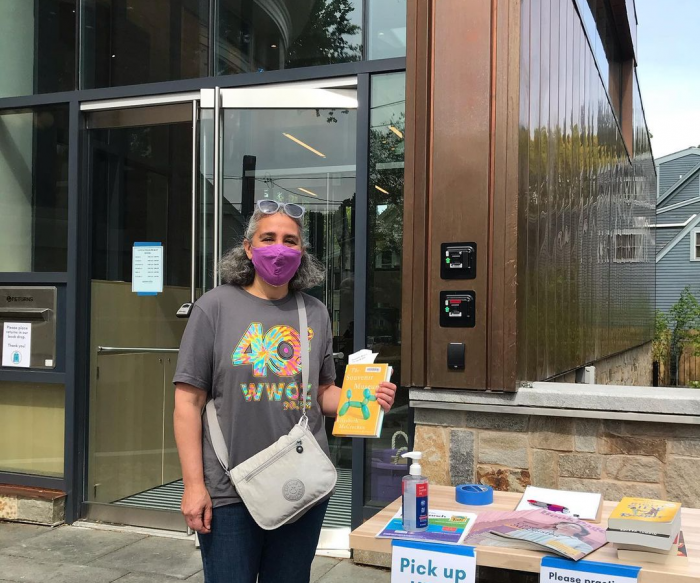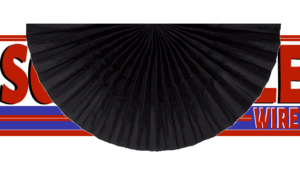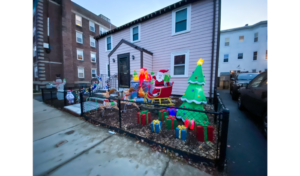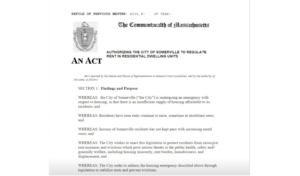The newly renovated space just opened for curbside service.
(Somerville Wire) – Somerville’s West Branch Library, which had been closed for renovation for years, finally opened up for curbside service on June 1. Construction started over the summer of 2019, and the historic library, which is now handicap accessible, is about 97% completed, according to Director of Libraries Cathy Piantigini. She said that the official opening of the space on College Avenue is slated for this season, perhaps in July.
While the main reason for the renovations was to make the library usable for disabled people, the building itself, which was built in 1909, was in great need of repair.
“The building proper, the historic building, it really suffered from years of neglect,” said Piantigini. “The last time it had any sort of major repair work was probably in the late 70s or early 80s. … When we’re talking about the West Branch … we had peeling paint that was just coming off the walls, with moisture that was bubbling the paint, which was falling off. We had the top floor, where there was a skylight that was covered up, so you wouldn’t have known it was there. There was no air conditioning system in the old building; so over the summer, it would get over 90 degrees, and no one could really be up there comfortably. [There was] graffiti on the walls, and [there were] parts of the walls that had literally fallen off, and you could see the wood that was underneath it. Downstairs, in the basement, that’s where the children’s room was located, and they had some serious flooding issues with water coming in. Because of that, the children’s room did need to have new painting and new carpeting. Basically what we were doing is constantly putting a band aid on things rather than trying to fix the source of the problem.”
The West Branch is listed on the National Register of Historic Places and is classified as a Carnegie Library. According to the City, it is an example of Neoclassical architecture of the early 20th century, and its historic features included “limestone and buff brick, the richly detailed cornice, entry gable with acroteria, corner quoins, and lamps flanking the entrance …” Robert Cassano, project manager with the City’s Capital Projects Division, said that in the design, the team was careful to preserve the historic character of the library.
“The outside was completely preserved. Besides washing it down and painting a lot of the wood restorations, we preserved anything that was needed from the outside,” said Cassano. “The roof was completely done over, because that was in really bad shape. We upgraded it … that was all done into a copper roof. Same thing with the windows—we did not replace the windows, but we did restore [them]. We did an upgrade of storm windows to help with energy efficiency.” He added, “The toughest part of this project was bringing the old and the new together. … We didn’t want it to be too modern, but we wanted to blend it, so that it made sense. We didn’t want people to look at it and go, ‘gee, this was always here.’ … We wanted to make sure that it wasn’t a shock, coming from the old to the new. You have a story to tell, from the old to the new.”
The new changes to the library include an accessible and appealing entryway that maintains the space’s historic integrity and the introduction of an elevator. It is landscaped in a way that provides ample green and open space. There is a separate bathroom constructed for use by children and their caregivers. The older building did not have a conference room or private areas; the library now has a conference room with a divider, so that it can be used by two different groups. There is a multipurpose space that, according to Piantigini, “can do a lot. We can have an author talk, a lecture series, or we can show a movie in that space, because it also has an AV system, with a drop down screen.” The skylight on the second floor has been restored, and there is a new indoor/outdoor book drop. In addition, there are public bathrooms that can be used without actually having to go in through the library.
The West Branch is currently open for curbside service, which means that materials can be handed to guests at the door. A visitor can request books online or on the phone and pick up the things that they need right outside the library. In addition, the library can offer services like lending museum passes or printed items. While construction was going on, materials were temporarily moved to a different location, the Tufts Administration Building.
Alan Bingham, chair of the Somerville Historic Preservation Committee, has been actively involved in the renovation process and attested to the value of having a working library. Now that the building is wheelchair accessible, it is now a more welcoming and inviting space, also for mothers who may be using strollers to bring their children to a place where they can learn to read.
“I’m an avid reader,” said Bingham. “I think of libraries as being the repository of all human knowledge—not only knowledge, but our imaginations and art. I see libraries as being terribly important.”
Piantigini said that libraries are spaces where people can come together, study, and grow, regardless of what their social, cultural, or economic situations may be.
“What makes them all special is that they really are the only ‘third space’ in your community where every age group, every gender, every economic background, immigrant or nonimmigrant—we all can come to the library,” said Piantigini. “Whether you have everything or nothing, you can come to the library and meet each other, borrow things, or sit and read the newspaper. It doesn’t cost anything. It’s the one place where we can all be together and learn from each other. I can’t think of another place like that.”
All Somerville Wire articles may be republished by community news outlets free of charge with permission and by larger commercial news outlets for a fee. Republication requests and all other inquiries should be directed to somervillewire@binjonline.org.
SUBSCRIBE TO THE FREE SOMERVILLE WIRE EMAIL NEWSLETTER: https://eepurl.com/hpBYPv
Shira Laucharoen is assistant director of the Boston Institute for Nonprofit Journalism and assistant editor and staff reporter of the Somerville Wire.
